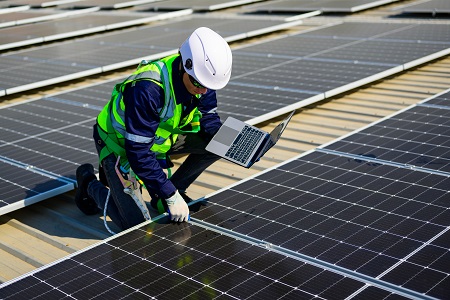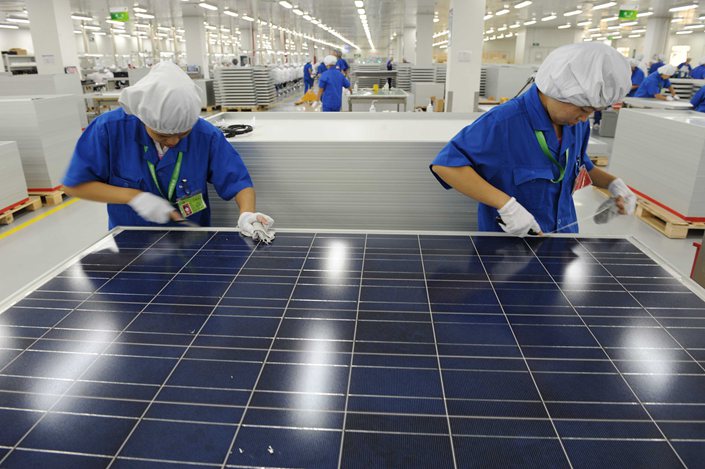9 Simple Techniques For Solar Panel Installation Virginia
9 Simple Techniques For Solar Panel Installation Virginia
Blog Article
Virginia Solar Providers: Lumina Solar Concentrates On Supplying Advanced Photovoltaic Solutions For Houses And Organizations
History and Establishing
Have you ever questioned how a photovoltaic panel business springs from a simple stimulate of inspiration into a powerhouse of renewable energy? It typically starts with a vision-- one fueled by a mix of innovation, determination, and a pinch of serendipity. The journey of lots of solar companies mirrors the advancement of the innovation itself: from bulky, inefficient panels to smooth, high-efficiency marvels harnessing the sun's bounty.
The Early Days
In the late 20th century, when solar power was still a specific niche principle, pioneers planted seeds for what would end up being a global motion. Picture a small workshop filled with curious engineers, relentlessly experimenting with solar batteries. Their enthusiasm was palpable, often driven by a desire to combat climate change and reduce dependence on nonrenewable fuel sources.
One such anecdote is about a creator who, motivated by an outdoor camping trip, recognized that even in remote areas, the sun could power essential gadgets. This basic observation triggered a business's mission to equalize access to tidy energy.
Founding Concepts

- Development: Continually pushing the borders of solar innovation to improve effectiveness and resilience.
- Sustainability: Dedicating to environment-friendly manufacturing and reducing carbon footprints.
- Ease of access: Making renewable resource options budget friendly and useful for daily users.
Turning points in Growth
| Year | Key Occasion |
|---|---|
| 1985 | Business established in a small garage, concentrating on research and development. |
| 1995 | Commercial solar panel product launched, gaining local attention. |
| 2005 | Broadened to global markets, accepting international eco-friendly energy objectives. |
| 2015 | Introduced advanced solar panel innovation with boosted energy conversion. |
Isn't it remarkable how these incremental actions, typically neglected, shape the energy landscape today? The photovoltaic panel company story is not simply about innovation; it has to do with a relentless mission for a brighter, cleaner future.

Innovations in Solar Panel Technologies
Ever seen how some solar panels shine brighter and last longer? It's not magic; it's the science of photovoltaic effectiveness. website Modern solar panel companies invest greatly in technologies like bifacial cells, which capture sunlight from both sides, increasing energy harvest without broadening roof area. Have you ever wondered why some panels carry out much better on cloudy days? That is because of advances in thin-film solar technology, which prospers under diffused light conditions.
Item Variations Customized to Special Needs
One size never fits all. Photovoltaic panel companies now use:
- Monocrystalline panels for maximum effectiveness and sleek aesthetics, ideal for space-constrained roofs.
- Polycrystalline panels, which use an economical option without compromising excessive output.
- Building-integrated photovoltaics (BIPV), combining solar tech effortlessly into architectural aspects like windows and exteriors.
Picking the right item isn't simply about upfront cost; it has to do with matching your environment, energy objectives, and long-lasting savings. For instance, homes shaded by trees require panels that excel in low-light circumstances, something lots of overlook up until energy bills climb up all of a sudden.
Technical Tips for Optimal Selection
- Evaluate the temperature level coefficient-- lower worths indicate panels lose less effectiveness on hot days.
- Look for panels with boosted anti-reflective finishings to optimize light absorption.
- Consider the panel's warranty not just for problems, but for ensured power output over decades.
- Don't undervalue the value of the inverter innovation coupled with the panels; it can make or break your system's efficiency.
Beyond Panels: Emerging Trends
Envision photovoltaic panels that adjust their angle instantly to chase after the sun-- tracking systems are becoming more available, increasing yield substantially. Or solar tiles that blend invisibly into your roofline, transforming your home into a quiet, self-sufficient power generator. These innovations are improving what a solar panel company offers-- not simply items, however incorporated energy options.
Market Presence and Global Operations
Ever wonder why some solar panel companies appear to grow up in every corner of the world while others hardly make a ripple? The distinction lies not just in innovation however in mastering the art of navigating diverse markets. Broadening worldwide is like planting seeds in various environments-- you must comprehend each environment's unique conditions to flourish.
Take, for example, the elaborate dance of logistics and supply chain management. Shipping panels halfway across the world isn't almost distance; it has to do with timing, customs, tariffs, and adapting to regional demand fluctuations. A company with robust international operations anticipates these variables, ensuring panels show up on schedule without inflating costs. This insight is no small accomplishment and typically separates market leaders from fans.
Key Techniques for Expanding Market Presence
- Localized production: Establishing production hubs near target markets lowers shipping hold-ups and import intricacies.
- Strategic collaborations: Teaming up with regional companies speeds up market penetration and constructs trust.
- Adaptive item design: Tailoring solar panel tech to weather, sun strength, and facilities subtleties improves performance and acceptance.
What about the human element? Photovoltaic panel companies running globally should reconcile cultural differences and regulative subtleties without forgeting their core mission. What works in a sun-drenched desert may falter in a humid seaside region. In some cases, the most ingenious service is merely listening-- soaking up regional insights to refine technology and method.
Experts frequently recommend a phased rollout instead of a shotgun growth. Why run the risk of overextension when measured growth develops sustainable momentum? Scaling sensibly indicates balancing aspiration with operational resilience - Solar Panel Company. After all, in the race for sustainable energy supremacy, patience can be as important as speed
Ecological Effect and Sustainability Practices
When solar panels initially emerged, numerous assumed they carried zero environmental baggage. The truth is more nuanced. The production of photovoltaic cells includes unusual earth metals and energy-intensive procedures, which can leave a substantial carbon footprint before the panels even reach rooftops. Yet, the real environmental expense depends greatly on the sustainability practices utilized by the photovoltaic panel business throughout the lifecycle of their items.
How often do we stop briefly to consider what takes place to photovoltaic panels at the end of their useful life? Unlike batteries or electronic devices, solar panels can last 25-30 years, but disposal and recycling paths stay underdeveloped in lots of regions. A company dedicated to minimizing environmental harm will have a robust plan for recycling photovoltaic materials, salvaging important silicon, glass, and metals to prevent land fill build-up.
Key Sustainability Techniques
- Using low-impact production strategies that decrease water and energy usage.
- Executing closed-loop systems to recycle production waste back into brand-new panels.
- Participating in transparent supply chain audits to ensure ethical sourcing of basic materials.
- Designing panels for simpler disassembly to aid future recycling efforts.
It deserves noting that some solar companies have originated innovative methods, such as incorporating eco-friendly components or utilizing less hazardous chemicals throughout fabrication. This not only reduces ecological strain but likewise sets a precedent for the market. The concern stays: can the solar industry truly pivot towards a circular economy model without compromising effectiveness or price?
Specialist Tips for Assessing Sustainability
- Ask about the company's commitment to carbon-neutral production and whether they offset emissions.
- Investigate if they partner with licensed recycling facilities committed to photovoltaic panel waste.
- Look for transparency reports detailing ecological impacts and sustainability objectives.
- Think about the longevity and warranty of panels as an indirect measure of resource effectiveness.
In the end, choosing solar energy should mean more than simply slashing electrical power bills; it has to do with supporting a future where energy is gathered properly and waste is thoughtfully managed. Solar panel business that accept this viewpoint not just brighten homes but also cast a brighter light on sustainable development.
Report this page